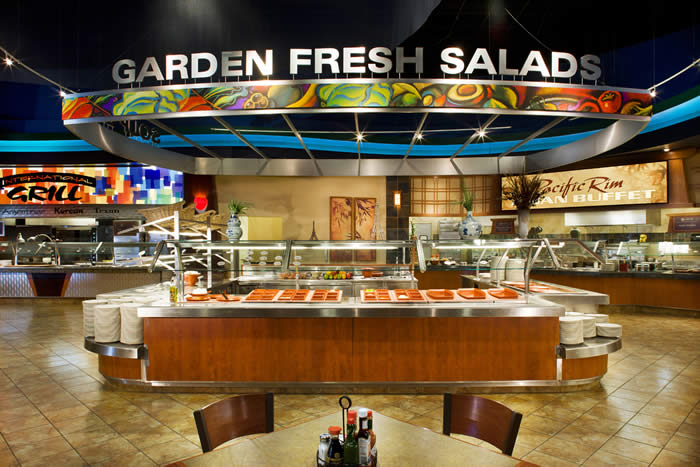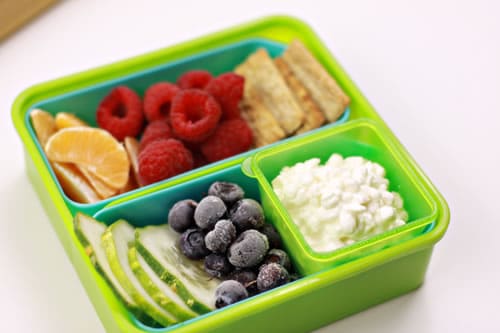Seven Ways to to Avoid the Freshman 15 (and Other Healthy Eating Tips)
Aug 19, 2013, Updated Sep 20, 2018

This post originally appeared as a guest post on the Attune Foods blog.
With summer vacation winding down (say it ain’t so!), our thoughts inevitably turn to the start of the school year. Although there are myriad posts out there on how to send your kids off to school with a good lunch in hand, it’s far too rare that we talk about how to guide your kids when they leave high school and head off to the big world of college.
We’ve all heard of the dreaded “Freshman 15” (though nowadays some call it the “Freshman 50”)… so here are some tips to empower your kids to stay healthier as they navigate the food-minefield that is higher education.
(For those of you without kids in college: most of these strategies could apply to anyone who’s staring down the barrel of a gluttonous buffet… so read on!)
Most schools offer prepaid meal plans with an all-you-can-eat mentality, which makes it quite likely that your teen is actually going to try to eat all that he or she can. So before they’re let loose at the lunch line, you might want to sit down with them and empower them with a few strategies for taking good care of themselves when walking into the cafeteria.
1. Walk the Walk
First, encourage them to walk around and check out all the day’s food options, before taking any food. I do this anytime I’m at a buffet – it ensures that I only take the food I want to eat, rather than just piling it all on as I go. (How many times have you loaded up your plate, only to find something that looked even more appealing?) Of course, the same holds true if it’s the food court at the student center or any other buffet – check out everything first, and then choose only some of it. Even if your teen still insists on picking the most unhealthful option, odds are that they will end up grabbing at least a few less calories in the process.
2. Salad First
Another great strategy is to get a salad first, eat it, hang out with friends for a few minutes, and then go back for the entrée. This has several benefits: First, it gets your kid (or you) to eat some salad.* Second, it slows down the whole process, so there’s more time to realize when the stomach is starting to feel full. Finally, when they do get up to pick an entrée, they’re more likely to make better choices, because they won’t be quite as ravenously hungry as when they first walked in the door.
* A gentle reminder to go easy on the dressing isn’t a bad idea, too. Iceberg lettuce plus ranch dressing does not a healthy salad make!
3. Small Plates
My favorite strategy to help avoid overeating is to use smaller plates. Everyone – even nutritionists and health experts – unwittingly eat more if they use larger plates (check out the work of Brian Wansink for more on this). By using a smaller plate, you’ll end up eating less without even thinking about it. Of course, at the all-you-can-eat smorgasbord, you can always get up and get more if you’re still hungry, so it’s a win-win.
Bonus: It’ll feel more like a fine-dining experience.
4. Drink Water
The all-you-can-drink soda fountain is probably the single biggest health trap there is. Encourage your teen to drink several glasses of water throughout their meal. And then, if they really want that soda treat – and remind them that soda is a treat – then let them know it’s okay to grab one in a to-go cup on their way out. (If nothing else, that’ll keep them from getting refills!)
5. Get Creative
Back in our dorm cafeteria, they had a pasta station where we could heat up our own pasta and sauce. Instead of just ladling on the Alfredo sauce (which was usually congealed and gloopy, anyway), I’d fill up a bowl of veggies at the salad bar, and sauté them on the hot plate before adding my pasta. Sliced mushrooms, olives, peppers, broccoli, water chestnuts, spinach, tofu, garbanzo beans… It became a game to see who could come up with the most fantastic creation; we made everything from pasta primavera to sesame noodles with peanut sauce. (Full confession: We also made Bananas Foster by caramelizing sliced bananas in some simmered-down apple juice…then pouring them on top of vanilla ice cream. Now that was a treat!)
6. But what about the dorm?
I remember frequently falling victim to the delivery services that prey on college campuses: pizza, sub sandwiches, even fresh-baked chocolate chip cookies (delivered with a pint of ice cream, no less).
Most dorms have kitchenettes with a microwave and, if your kid is lucky, a stovetop and maybe a small oven. So if it’s at all possible, empower your student with a gift of basic cooking supplies: A saucepan, spatula, knife, colander, and of course a plate, bowl, and utensils. Show them how to boil water (I’m serious! This is important!) so they can cook some (whole grain) pasta, and maybe scramble up some eggs or cook a chicken breast. Even a box of mac’n’cheese or a bowl of ramen is probably less of a calorie-bomb than three slices of pizza at two o’clock in the morning.
Let’s not forget breakfast! A bowl of Uncle Sam is an easy, fast, and delicious way for your kid to fill up and have lots of energy for their day of classes.
7. If all else fails…
So talk to your teen. And if you can, get them to promise you that they will at least try some of these strategies. And if all else fails, you can just show them how to use that dorm microwave to make better microwave popcorn.
—




















